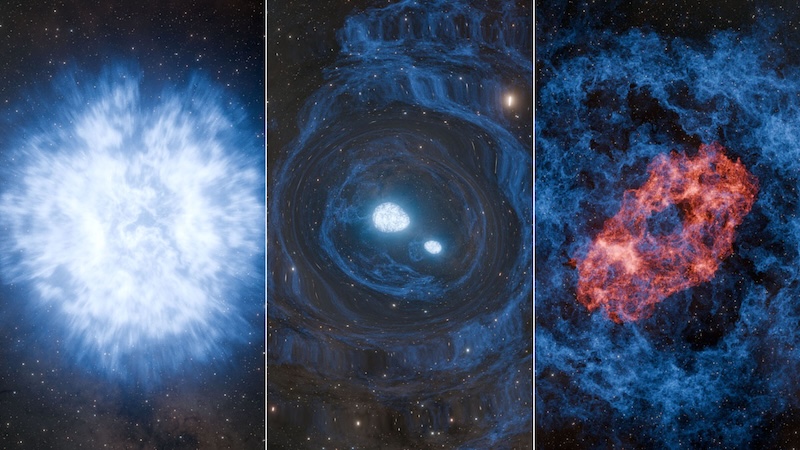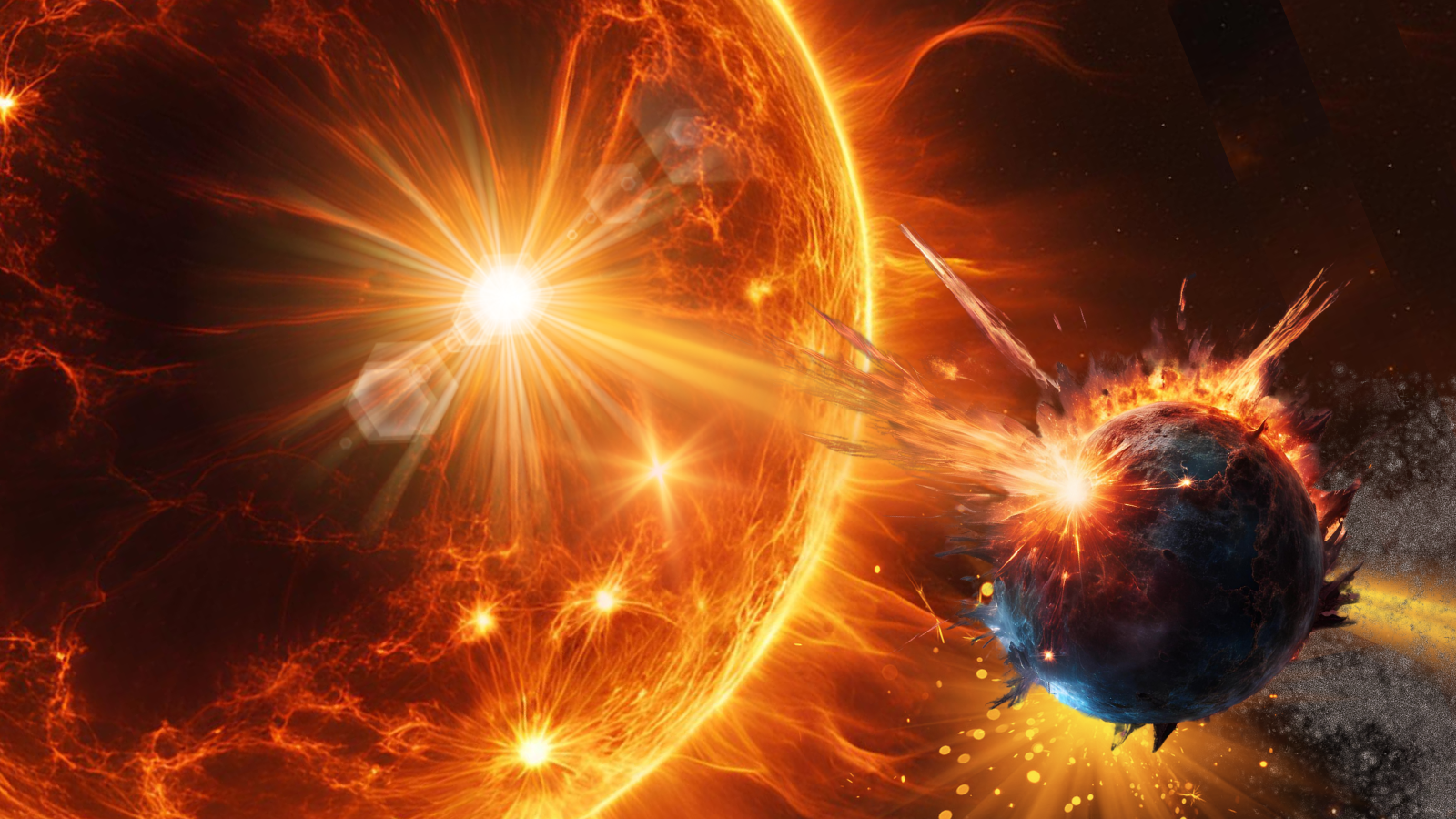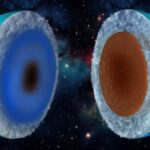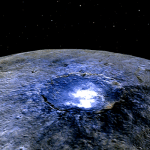Now Reading: Biggest black hole merger ever breaks the universe’s rules
-
01
Biggest black hole merger ever breaks the universe’s rules
Biggest black hole merger ever breaks the universe’s rules
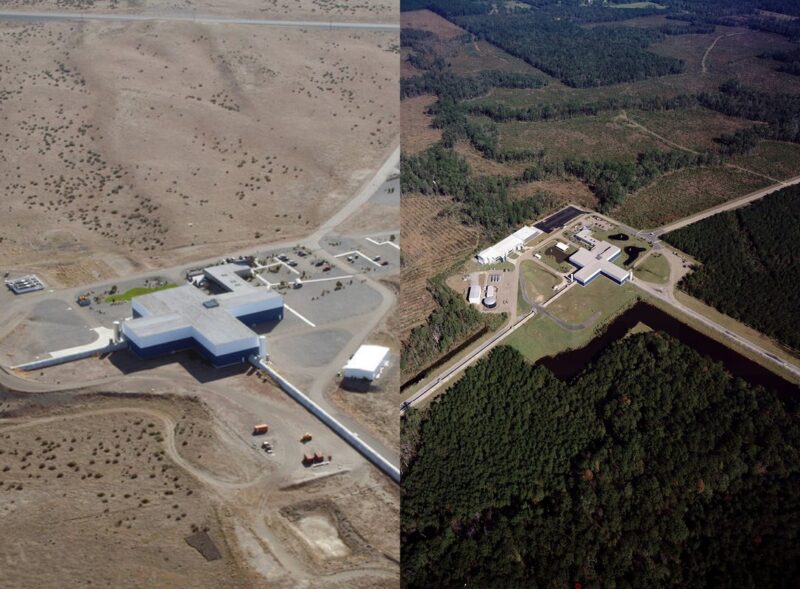
Watch EarthSky’s Dave Adalian and the Bad Astronomer Phil Plait discuss the biggest black hole merger ever. The livestream drops at 12:15 p.m. CDT on July 18, 2025.
Caltech published this original story on July 14, 2025. Edits by EarthSky.
Gravitational waves from massive black hole merger
The LIGO-Virgo-KAGRA Collaboration has detected the merger of the most massive black holes ever observed. This powerful merger produced a final black hole approximately 225 times the mass of our sun. The astronomers detected the signal of the merger, which they designated GW231123, during the 4th observing run of the LVK network on November 23, 2023.
The collaboration used the LIGO observatories to look at gravitational waves, or ripples in spacetime. LIGO – the Laser Interferometer Gravitational-wave Observatory – made history in 2015 with the 1st-ever direct detection of gravitational waves. The twin detectors of LIGO, one located in Livingston, Louisiana, and the other in Hanford, Washington, jointly made the detection of the signal. In that case, the waves emanated from a black hole merger that resulted in a final black hole 62 times the mass of our sun.
Since then, the LIGO team has teamed up with partners at the Virgo detector in Italy and the Kamioka Gravitational Wave Detector in Japan to form the LVK Collaboration. These detectors have collectively observed more than 200 black hole mergers in their fourth run, and about 300 in total since the start of the first run in 2015.
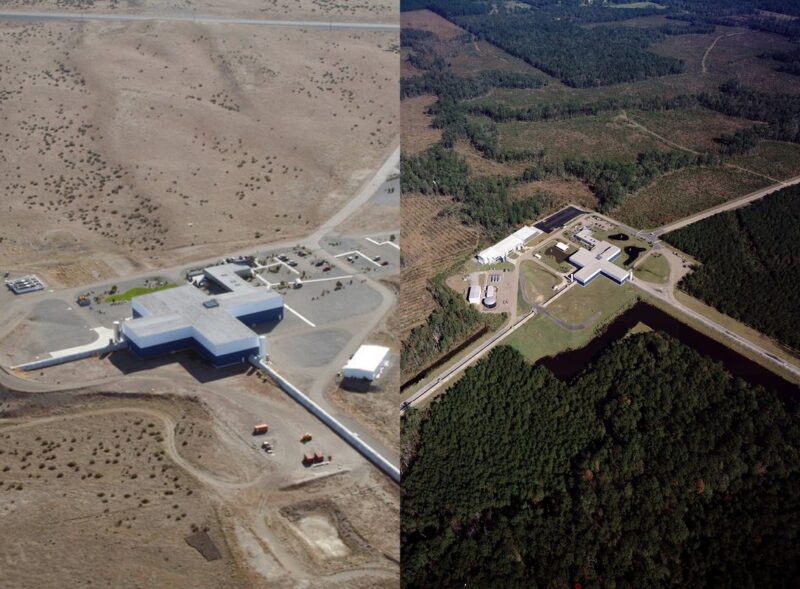
Credit: LIGO Lab/Caltech/MIT
Black hole merger a ‘forbidden’ 225 times more massive than sun
Before now, the most massive black hole merger – produced by an event that took place in 2021 – had a total mass of 140 times that of the sun.
In the more recent GW231123 event, the 225-solar-mass black hole was created by the coalescence of black holes each approximately 100 and 140 times the mass of the sun.
In addition to their high masses, the black holes are also rapidly spinning. Mark Hannam of Cardiff University and a member of the LVK Collaboration said:
This is the most massive black hole binary we’ve observed through gravitational waves, and it presents a real challenge to our understanding of black hole formation. Black holes this massive are forbidden through standard stellar evolution models. One possibility is that the two black holes in this binary formed through earlier mergers of smaller black holes.
Dave Reitze, the executive director of LIGO at Caltech, said:
This observation once again demonstrates how gravitational waves are uniquely revealing the fundamental and exotic nature of black holes throughout the universe.
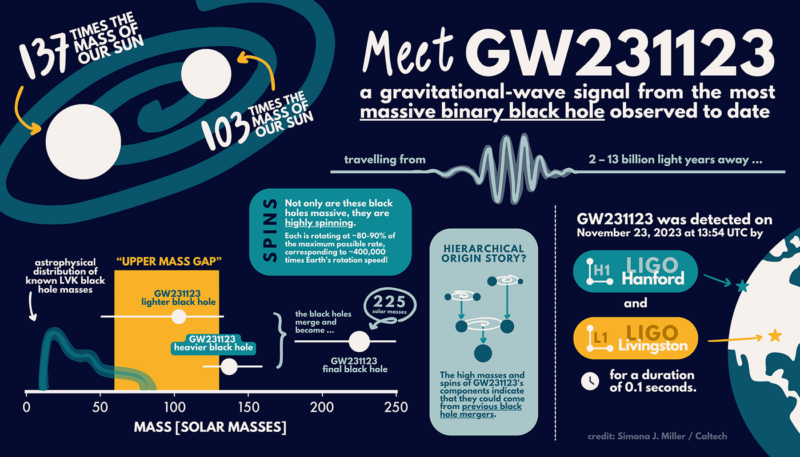
Black holes spinning at nearly the universe’s speed limit
The high mass and extremely rapid spinning of the black holes in GW231123 push the limits of both gravitational-wave detection technology and current theoretical models. Extracting accurate information from the signal required the use of models that account for the intricate dynamics of highly spinning black holes. Charlie Hoy of the University of Portsmouth and a member of the LVK said:
The black holes appear to be spinning very rapidly, near the limit allowed by Einstein’s theory of general relativity. That makes the signal difficult to model and interpret. It’s an excellent case study for pushing forward the development of our theoretical tools.
Researchers are continuing to refine their analysis and improve the models used to interpret such extreme events. Gregorio Carullo of the University of Birmingham and a member of the LVK said:
It will take years for the community to fully unravel this intricate signal pattern and all its implications. Despite the most likely explanation remaining a black hole merger, more complex scenarios could be the key to deciphering its unexpected features. Exciting times ahead!
Black hole merger pushed the limits of gravitational-wave astronomy
Gravitational-wave detectors such as LIGO, Virgo and KAGRA are designed to measure minute distortions in space-time caused by violent cosmic events. The fourth observing run began in May 2023. And additional observations from the first half of the run (up to January 2024) will be published later in the summer. Sophie Bini, a postdoctoral researcher at Caltech and member of the LVK, said:
This event pushes our instrumentation and data-analysis capabilities to the edge of what’s currently possible. It’s a powerful example of how much we can learn from gravitational-wave astronomy and how much more there is to uncover.
GW231123 will be presented at the 24th International Conference on General Relativity and Gravitation (GR24) and the 16th Edoardo Amaldi Conference on Gravitational Waves held jointly at the GR-Amaldi meeting in Glasgow, Scotland, U.K., July 14–18, 2025. The calibrated data used to detect and study GW231123 will be made available for other researchers to analyze through the Gravitational Wave Open Science Center (GWOSC).
Bottom line: Cutting-edge gravity wave detectors have found the most massive black hole merger ever recorded. The international team that discovered it says its size defies our understanding of how black holes form.
Read more: For the 1st time, a visible light explosion from a black hole merger
The post Biggest black hole merger ever breaks the universe’s rules first appeared on EarthSky.
Stay Informed With the Latest & Most Important News
Previous Post
Next Post
-
 01From Polymerization-Enabled Folding and Assembly to Chemical Evolution: Key Processes for Emergence of Functional Polymers in the Origin of Life
01From Polymerization-Enabled Folding and Assembly to Chemical Evolution: Key Processes for Emergence of Functional Polymers in the Origin of Life -
 02Two Black Holes Observed Circling Each Other for the First Time
02Two Black Holes Observed Circling Each Other for the First Time -
 03How New NASA, India Earth Satellite NISAR Will See Earth
03How New NASA, India Earth Satellite NISAR Will See Earth -
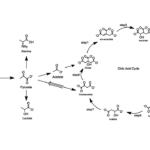 04Thermodynamic Constraints On The Citric Acid Cycle And Related Reactions In Ocean World Interiors
04Thermodynamic Constraints On The Citric Acid Cycle And Related Reactions In Ocean World Interiors -
 05Φsat-2 begins science phase for AI Earth images
05Φsat-2 begins science phase for AI Earth images -
 06Hurricane forecasters are losing 3 key satellites ahead of peak storm season − a meteorologist explains why it matters
06Hurricane forecasters are losing 3 key satellites ahead of peak storm season − a meteorologist explains why it matters -
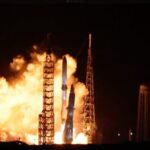 07U.S. Space Force awards $13.7 billion in new national security launch contracts to Blue Origin, SpaceX and ULA
07U.S. Space Force awards $13.7 billion in new national security launch contracts to Blue Origin, SpaceX and ULA














